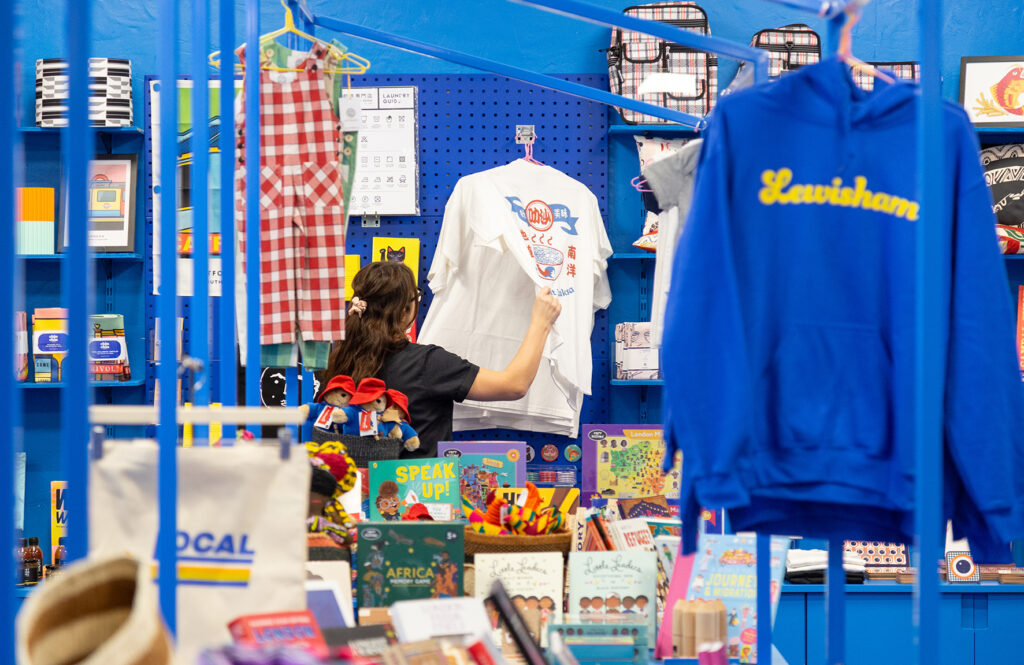Enjoy this article?
Most Museums Journal content is only available to members. Join the MA to get full access to the latest thinking and trends from across the sector, case studies and best practice advice.
Museums play a crucial role in their communities. They are a focal point for community heritage; provide spaces for learning, reflection and connection; and often offer vital creative and cultural programmes for vulnerable and underrepresented groups. Museums can also foster a sense of local history and identity, improve health and wellbeing and be important catalysts for cultural regeneration.
But financing these activities can be hugely challenging, especially in the face of dwindling government funding, changing footfall and visitor demographics, and rising costs. How can museums shore up their income streams without sacrificing social impact?
In September we launched a not-for-profit organisation, Figurative, which is attempting to answer this and similar questions by exploring new funding models for the cultural and creative sector.
One key method we use is impact investing – a form of responsible finance where investors are motivated by positive social outcomes as well as financial returns. I believe it could be transformative for many museum and heritage organisations.
Museum development teams will often seek to develop assets – buildings, collections, services, networks – to generate income and revenue. Rented spaces, gift shops and cafes, digital services and other offers can bring in money which can then be reinvested in core programmes. Both the investment in asset development and the new revenue those assets bring can serve to regenerate the community.
Impact investing can help these projects succeed financially, while keeping social outcomes at the core of their funding and reporting systems.

In 2018, the Figurative team, then part of Nesta, launched the Cultural Impact Development Fund (now closed) which offered repayable finance to socially driven arts and cultural organisations.
Among them was the Migration Museum in south-east London. We financed its development of an online shop, selling products by migrant-owned businesses and creators, through a combination of grant and loan funding totalling £57,000. We also provide ongoing support to help measure the impact of their activities.
The Migration Museum does important work to explore migration to and from the UK through curated exhibitions and education programmes spanning school, university and adult learners. It is based in Lewisham Shopping Centre but is fundraising to move to a new site in 2027.
Opening a shop celebrating the creativity and entrepreneurialism of migrant communities not only aligns with the museum’s mission but provides income to support their programmes.
It has also helped them engage and champion local communities; the shop prioritises local makers and offers products relating to the area, providing an important entry point for people who might not otherwise visit.
Unlike grant funding, impact investment needs to be repaid, so there is a degree of financial risk. But this means social investors are doubly motivated to see the projects they fund succeed.
Impact investors conduct due diligence to make sure business and impact plans are robust, with successful deals setting useful precedents for future funding.
They are also likely to offer loans with lower interest rates than purely commercial lenders – often essential for cultural organisations in a challenging economic environment.
With support from their funding partners, impact investors can also be flexible when circumstances change. For example, Figurative were able to offer repayment “holidays” during the Covid-19 pandemic.
Repayable finance of this kind can benefit the whole sector. The more impact investment loans are repaid, the more those funders can reinvest back into cultural and creative projects – so a single "pot" of money goes much further.
Impact investment will not (and should not) replace grant funding, but it can offer a way to diversify funding streams while strengthening the museum sector’s laudable environmental and social commitments.
One of our goals at Figurative is to ensure the cultural and creative sector is not left behind as the impact investment market grows. We want more investors to recognise the sector’s potential to transform communities, boost economies and strengthen society.
I truly believe impact investing has a role to play in cultural regeneration everywhere and am proud of the fact that two thirds of our investments have gone to organisations in relatively deprived areas of the UK.
Investment is just one tool among many that museums can use to support local impact. We also work to connect cultural organisations with local philanthropists, creative enterprises and other supporters of the arts, sparking partnerships and collaborations rooted in community.
We know what a difference museums can make to community life. A key focus now is bringing the sector and its funders more closely together around shared impact goals, so that we can all do better with the money available.
Fran Sanderson is the CEO of Figurative
Most Museums Journal content is only available to members. Join the MA to get full access to the latest thinking and trends from across the sector, case studies and best practice advice.